I've got some GPS data (latlong) and I want to plot the GPS points and their connecting lines and color both by the time difference between the two GPS points. I've figured out how to color the points and convert the points to a LINESTRING but I can't figure out how to recolor the scale of the line.
I saw this post: Color portions of sf LINESTRING by variable that shows how to break the linestrings into segments and color the segments by a categorical variable but as I have close to 100,000 observations I'd like to avoid just splitting my plot up into 99,999 pieces and also, my data is continuous.
Here's some toy data:
# Create some data points
fake_data = data.frame(Time = 1:6,
Long = c(-90.46200, -90.46160, -90.46170, -90.46150, -90.46100, -90.46240),
Lat = c(33.88540, 33.88750, 33.88520, 33.88340, 33.88540, 33.88150))
# Define as points
points = st_as_sf(fake_data, coords = c("Long", "Lat"), crs = 4326, remove = FALSE)
# Connect the dots
lines = points %>% summarize(do_union = FALSE) %>% st_cast("LINESTRING")
library(ggplot2)
# Plot
ggplot(data = points)+
geom_sf(aes(color = as.numeric(points$Time)))+
geom_sf(data = lines)+#, aes(color = numeric(points$Time[1:(length(points$Time)-1)])))+ #did not work
ylim(c(33.87, 33.89))+
xlim(c(-90.47, -90.45))+
scale_color_gradient(name = "Time", position="bottom" , low = "blue", high = "red")
Thank you!

